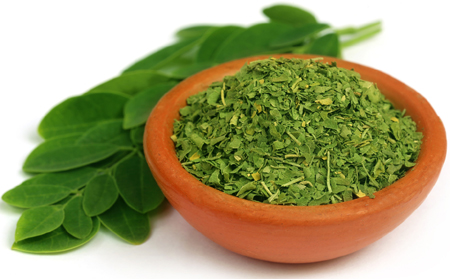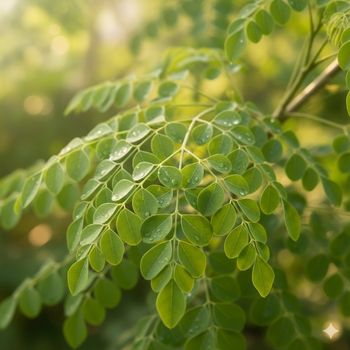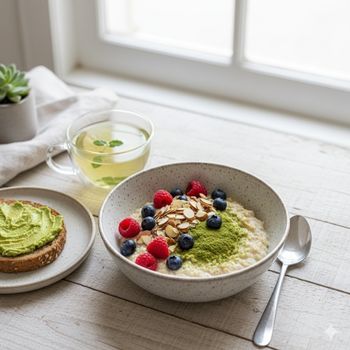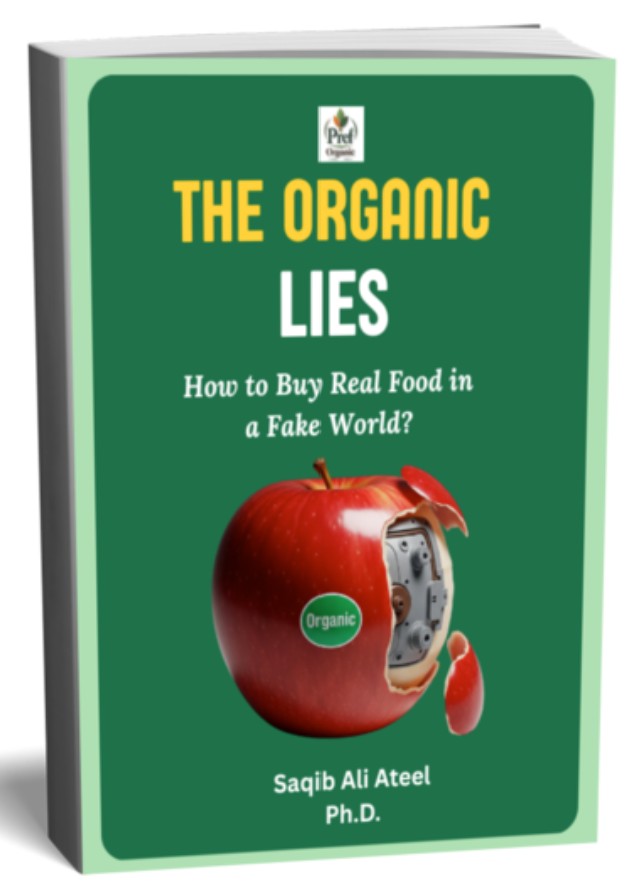Moringa Leaves: Your Ultimate Guide to The "Miracle
Tree"

You've probably heard the buzz about moringa leaves. One article calls it a "miracle tree," packed with more vitamin C than oranges and more potassium than bananas. The next one you see is full of confusing claims that sound too good to be true. It leaves you wondering: Is this leafy green truly a superfood, or is it just another overhyped trend? You need a clear, honest answer without the marketing fluff.
As a student in agriculture who grew up with a moringa tree in the backyard, I've asked the same questions. I've spent years digging into the research papers while also having hands-on experience with the plant itself. My goal is to provide reliable, evidence-based information on this incredible plant, cutting through the noise to offer you a balanced perspective.
We're going to explore what the research says, what my practical experience has taught me, and how you can confidently decide if moringa is right for you.
Your Quick Brief to the Miracle Tree
- A True Nutritional Powerhouse: We'll break down the impressive vitamins, minerals, and complete protein found in moringa leaves and show you the real numbers.
- Science-Backed Benefits: Discover how moringa can help fight inflammation, support your heart and brain, and protect your body's cells.
- Practical Ways to Use It: Get simple, easy tips and delicious recipes to make moringa a seamless part of your daily routine.
- Honest Safety Information: Learn about the potential side effects and who should be cautious so that you can feel empowered and safe.
What Are Moringa Leaves? A Farmer’s Introduction to the
"Miracle Tree"

Before we dive into the science, let's get to know the plant itself. The Moringa oleifera tree is native to Pakistan and India, and it is so resilient and fast-growing that it now thrives in tropical and subtropical regions all over the world.
Growing up on a farm taught me to appreciate plants that are both tough and generous, and moringa is a perfect example. It can handle drought and poor soil, yet it produces one of the most nutrient-dense leaves on the planet.
For those who might see it fresh, the leaves are easy to spot. They aren't large, single leaves but are made up of many small, delicate, oval-shaped leaflets, giving them a feathery, fern-like appearance. They have a vibrant green color and a soft texture. This unique look is one reason it's so cherished in traditional cultures, from Ayurveda in India to folk medicine in Africa.
12 Science-Backed Health Benefits of Moringa Leaves 💪
This is where my research on studies gets exciting. The health benefits of moringa leaves aren't just based on old stories; modern science is beginning to understand why this plant is so powerful. It’s not one single compound, but a team of them working together.
1. Fights Free Radicals with Potent Antioxidants
Think of free radicals as tiny, chaotic troublemakers bouncing around inside your cells, causing damage called oxidative stress. This damage contributes to aging and chronic diseases like heart disease and diabetes. Moringa leaves are loaded with antioxidants like quercetin, chlorogenic acid, and Vitamin C, which act like peacekeepers, neutralizing these free radicals and protecting your cells.
2. Combats Inflammation
While a little inflammation is a normal response to injury, chronic inflammation is a root cause of many serious health issues. Moringa contains powerful anti-inflammatory compounds, most notably isothiocyanates, that help calm this chronic response in the body.
3. Helps Lower Blood Sugar Levels
Several studies suggest moringa can have a positive effect on blood sugar. This is partly due to compounds that may improve how your body uses insulin and reduce blood sugar levels, making it a promising natural support for metabolic health.4
4. May Lower Cholesterol and Support Heart Health ❤️
High levels of "bad" LDL cholesterol are a major risk for heart disease. Both animal and human studies have shown that moringa can have a cholesterol-lowering effect, similar to oats or flaxseed. This helps keep your arteries clear and your heart healthy.
5. Protects and Nourishes Skin and Hair ✨
The high concentration of antioxidants in moringa helps fight the damage from pollution and UV rays that can lead to wrinkles. It also provides a rich profile of amino acids—the building blocks of protein—which are essential for strong, healthy hair growth.
6. Supports Brain Health and Cognitive Function 🧠
Your brain is highly susceptible to oxidative damage. The powerful antioxidants in moringa, like Vitamin C and E, help protect your neurons. Some research even suggests it can support neurotransmitters like serotonin and dopamine, which are crucial for mood, memory, and focus.
7. Protects the Liver
Your liver is your body's main filter. Moringa has been shown to have a protective effect on the liver, shielding it from damage caused by toxins and helping to keep its enzymes at healthy levels.
8. Enhances Digestive Health
With a good amount of fiber, moringa can help keep your digestive system regular. Its anti-inflammatory properties can also be soothing for the gut, and its antimicrobial compounds may help maintain a healthy balance of gut bacteria.
9. Promotes Stronger Bones
Moringa leaves are an excellent source of plant-based calcium and phosphorus, two of the most important minerals for maintaining strong bones and teeth.
10. Possesses Antimicrobial and Antibacterial Properties
Moringa contains natural compounds that have been shown to inhibit the growth of various harmful bacteria and fungi, including those that can cause skin infections or food poisoning.
11. Aids in Gentle Detoxification
The leaves act as natural cleansers, supporting the liver's detoxification pathways and helping to purify the blood. This can lead to increased energy and better overall vitality.
12. Protects Against Arsenic Toxicity
This is a unique one. In some parts of the world, food and water can be contaminated with arsenic. Studies have shown that moringa leaf extracts can help protect the body from the toxic effects of this heavy metal.
Moringa Leaves Nutrition Facts: A Realistic Look at the
Numbers

You’ve probably seen the wild claims: "10 times the vitamin A of carrots!" or "17 times the calcium of milk!". From an academic perspective, these statements can be misleading. They are usually comparing dried, concentrated moringa powder by weight to fresh, water-heavy foods.
While the powder is incredibly potent, a more honest way to look at it is to understand the difference between the fresh and dried forms. The drying process removes water and concentrates most nutrients, but it can degrade others. Here’s a clear, balanced comparison based on available data.
| Nutrient (per 100g) 🔬 | Fresh Moringa Leaves 🍃 | Dried Moringa Leaf Powder ✨ | The Friendly Takeaway ✅ |
|---|---|---|---|
| Protein 🥚 | ~9.4 g | ~24-30 g | The powder is a fantastic source of complete plant protein. Excellent for smoothies and shakes! 💪 |
| Vitamin A (from beta-carotene) 🥕 | ~738 µg | Up to 10x higher | Drying makes the powder a Vitamin A powerhouse for vision and powerful immune support. 👁️ |
| Vitamin C 🍋 | ~52-220 mg | ~2-17 mg | This is key: Fresh leaves are the winner for Vitamin C, as it's sensitive to heat and degrades during drying. Eat fresh for antioxidants! 🥇 |
| Calcium 🥛 | ~185-440 mg | ~1400-2000 mg | The powder is an exceptional, concentrated source of calcium, helping to build strong bones and teeth. 🦴 |
| Iron 🥩 | ~4 mg | ~21-28 mg | Dried powder is a great way to boost your iron intake and combat fatigue and anemia. A simple energy lift! 🚀 |
The bottom line: If you have access to fresh leaves and want a Vitamin C boost, use them! For a concentrated dose of almost everything else—protein, calcium, iron, and Vitamin A—the powder is your best bet.
How to Use Moringa Leaves: A Practical Guide

Moringa leaf extracts have long been claimed to affect glycemic control in diabetics. In 2013, a study on beta-cell dysfunction published by the Asian Journal of Pharmaceutical and Clinical Research proved that a systematic treatment with Moringa extracts cured bacteria-induced Type 1 diabetes and insulin-resistant Type 2 diabetes. This study was done in rats as a model for human treatment approach.
Here are 10 super simple moringa leaves uses to get you started:
1. Smoothies & Juices: Blend a teaspoon into your favorite smoothie. The fruit flavors will easily balance its taste.
2. Soups & Stews: Stir a spoonful into a warm soup or lentil dal just before you serve it.
3. Salad Dressings: Whisk it into a vinaigrette or a creamy yogurt-based dressing.
4. Oatmeal or Yogurt: Mix it right into your morning bowl for an easy nutrient kick.
5. Guacamole or Hummus: Add a teaspoon to your favorite dip for extra green goodness.
6. Scrambled Eggs: Whisk a small amount into your eggs before cooking.
7. Energy Balls: Incorporate the powder into no-bake energy ball recipes.
8. Moringa Water: Stir a teaspoon into a glass of water with a squeeze of lemon for a quick boost.
9. Baked Goods: Add a tablespoon to muffin, pancake, or savory bread batter.
10. Moringa Tea: A simple, nourishing tea is one of the easiest ways to enjoy it.
Easy Moringa Leaves Recipes
Ready to try something more? Here are two of my favorite simple recipes.
Recipe 1: 15-Minute Moringa Leaf Stir-Fry (Thoran)
This traditional South Indian dish is how I first learned to love fresh moringa leaves. It’s simple, quick, and delicious.
Ingredients:
- 2 cups fresh moringa leaves, washed, stems removed
- 1 tbsp coconut oil
- 1/2 tsp mustard seeds
- 1/4 cup finely chopped onion
- 2 cloves garlic, minced
- 1/4 cup grated coconut (fresh or desiccated)
- 1/4 tsp turmeric powder
- Salt to taste
Instructions:
1. Heat oil in a pan. Add mustard seeds and let them pop.
2. Add the onion and garlic and sauté until soft.
3. Stir in the turmeric, then add the moringa leaves, coconut, and salt.
4. Stir well and cook for 5-7 minutes, until the leaves are wilted. Serve hot!
Recipe 2: Nourishing Moringa Dal (Lentil Soup)
Adding moringa to dal is a classic way to boost its nutritional value. It’s pure comfort food.
Ingredients:
- 1 cup toor dal (or other lentils), rinsed
- 3 cups water
- 1/2 tsp turmeric powder
- 1 tbsp ghee or oil
- 1 tsp cumin seeds
- 1 small onion, chopped
- 1 tomato, chopped
- 2 cups fresh moringa leaves, washed
- Salt to taste
Instructions:
1. Cook the dal with water and turmeric until soft (a pressure cooker works great).
2. In a separate pan, heat the ghee/oil. Add cumin seeds.
3. Add the onion and cook until golden. Add the tomato and cook until soft.
4. Stir in the moringa leaves and sauté for 3-4 minutes until they wilt.
5. Pour this mixture into the cooked dal. Add salt and simmer for 5 more minutes. Serve hot with rice.
How to Make Moringa Tea
- From Fresh Leaves: Gently heat 1-2 cups of water (don't boil). Add a cup of fresh leaves and steep for 5-10 minutes. Strain and enjoy.
- From Powder: Add 1/2 to 1 teaspoon of powder to a mug. Pour hot (not boiling) water over it, stir well, and let it brew for 5 minutes. Some sediment is normal.
- From Dried Leaves: Use 1-2 teaspoons of dried leaves in a tea infuser and steep in hot water for 5-10 minutes.
Safety, Side Effects, and Dosage: What You Need to Know 🛡️
A trusted friend gives you the full picture, and that includes safety. Moringa leaves are generally very safe, especially when eaten as a food. However, there are a few things to keep in mind.
- Start Slow: If you're new to moringa, start with a small amount, like 1/2 to 1 teaspoon of powder per day. Its high fiber content can cause digestive upset (like gas or diarrhea) if you take too much too soon.
Who Should Be Cautious:
- Pregnancy: While the leaves are often consumed, other parts of the plant (bark, root) can cause uterine contractions. To be safe, most experts advise pregnant women to avoid moringa supplements.
- Medication Interactions: Because moringa can lower blood sugar and blood pressure, and because it's high in Vitamin K (which affects blood clotting), you should talk to your doctor before taking it if you are on medications for diabetes, blood pressure, thyroid conditions, or blood thinners.
The Takeaway: Is Moringa Right for You?
So, is moringa a "miracle"? The science on this is still emerging, but what we know so far is very promising. From my perspective as both a researcher and a home gardener, I see moringa leaves as an incredibly valuable tool for wellness.
It’s not a magic pill, but it is a nutritional powerhouse that can help fill gaps in our modern diets, support our body's natural defenses, and add a vibrant boost of green to our plates. By starting slow, listening to your body, and using it as a supplement to a balanced lifestyle, you can confidently and safely explore all the good it has to offer.
High-Value External Links
For those who want to dive even deeper into the research, here are some excellent resources:
1. Read more on the health benefits of moringa leaves in this comprehensive article from Johns Hopkins University:
2. Explore the nutritional and medicinal properties of moringa leaves in this detailed scientific review from MDPI:
3. Get an in-depth guide to moringa nutrition and its uses from the trusted health resource, WebMD:
